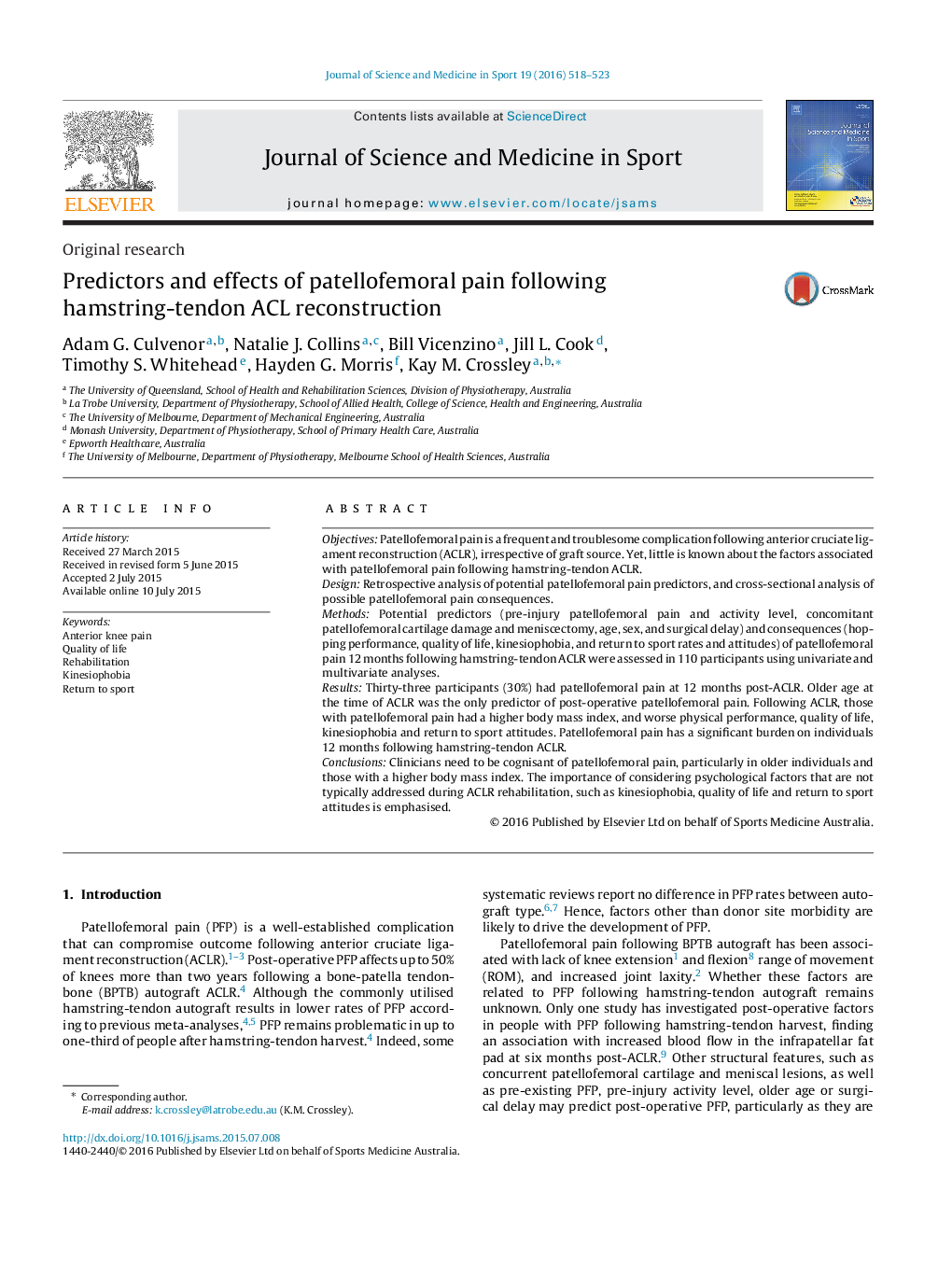| کد مقاله | کد نشریه | سال انتشار | مقاله انگلیسی | نسخه تمام متن |
|---|---|---|---|---|
| 2701376 | 1144428 | 2016 | 6 صفحه PDF | دانلود رایگان |
ObjectivesPatellofemoral pain is a frequent and troublesome complication following anterior cruciate ligament reconstruction (ACLR), irrespective of graft source. Yet, little is known about the factors associated with patellofemoral pain following hamstring-tendon ACLR.DesignRetrospective analysis of potential patellofemoral pain predictors, and cross-sectional analysis of possible patellofemoral pain consequences.MethodsPotential predictors (pre-injury patellofemoral pain and activity level, concomitant patellofemoral cartilage damage and meniscectomy, age, sex, and surgical delay) and consequences (hopping performance, quality of life, kinesiophobia, and return to sport rates and attitudes) of patellofemoral pain 12 months following hamstring-tendon ACLR were assessed in 110 participants using univariate and multivariate analyses.ResultsThirty-three participants (30%) had patellofemoral pain at 12 months post-ACLR. Older age at the time of ACLR was the only predictor of post-operative patellofemoral pain. Following ACLR, those with patellofemoral pain had a higher body mass index, and worse physical performance, quality of life, kinesiophobia and return to sport attitudes. Patellofemoral pain has a significant burden on individuals 12 months following hamstring-tendon ACLR.ConclusionsClinicians need to be cognisant of patellofemoral pain, particularly in older individuals and those with a higher body mass index. The importance of considering psychological factors that are not typically addressed during ACLR rehabilitation, such as kinesiophobia, quality of life and return to sport attitudes is emphasised.
Journal: Journal of Science and Medicine in Sport - Volume 19, Issue 7, July 2016, Pages 518–523
